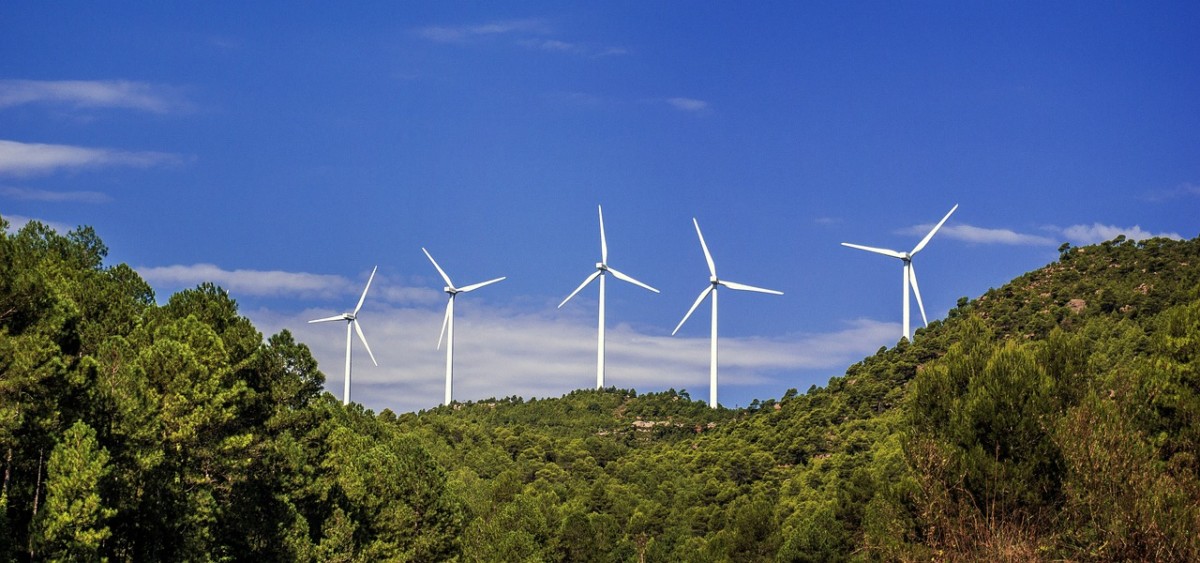What Is Green Energy
This article will discuss what is green energy and why it is important.
Green energy, is also known as renewable energy.
Wind or tidal energy, Earth’s natural elements replenish faster than fossil fuels do.
It is a crucial part of our future energy sustainability and its use has been growing over the past decade.
Green energy is more cost-efficient, and eco-friendly, and provides greater energy security.
What’s the difference between green energy and renewable energy?
Green energy and renewable energy are often used, but they have distinct differences.
Renewable energy sources include solar, wind, hydroelectricity, geothermal, and biomass energies.
Green energy refers to any form of renewable energy that has a minimal impact on the environment.
Renewable sources of energy are those that can replenish over time.
Green energy does not deplete natural resources or produce harmful byproducts.
Green energy, a clean source of energy that generates power. Does not produce carbon emissions or other pollutants.
The distinction between green and renewable energies is difficult.
For example, biofuels such as corn ethanol. Classified as a renewable fuel source requires large amounts of land. This can contribute to deforestation.
In conclusion,
Green and renewable energies share some commonalities. Being sustainable alternatives to fossil fuels, they differ in their environmental impact.
Green energy prioritizes low-impact methods for generating electricity. While considering factors like air quality and water pollution.
Thus it’s important to understand the difference between them. When evaluating alternative forms of power generation.
Benefits of Green Energy

Green energy refers to the production of electricity or fuel from renewable sources. Such as solar, wind, hydro, geothermal, and biomass.
The use of green energy has been on the rise due to its many benefits compared to traditional fossil fuels.
One of the significant advantages is that it reduces greenhouse gas emissions. which contribute to climate change.
Additionally, green energy is cheaper than traditional fossil fuels in the long run. Since renewable sources are infinite and need minimal maintenance costs once installed.
It also promotes energy independence. since countries can produce their own renewable energy. Instead of relying on foreign oil imports.
Green energy creates job opportunities through manufacturing. Installing, and maintaining equipment for renewable power generation.
Moreover, using green energy helps conserve natural resources. Such as water and land which are crucial for human survival.
Unlike coal mining or fracking, which destroy ecosystems. And pollute water sources by releasing toxic chemicals.
Green energy technologies do not have negative environmental impacts. When installed and maintained.
Investing in clean technologies also drives innovation in other sectors. Such as transportation leading to a healthier planet.
Popular Sources of Green Energy
Green energy is a renewable and sustainable source of power. It helps reduce the carbon footprint on the environment.
Popular sources of green energy include solar, wind, hydroelectric, geothermal, and biomass.
Solar energy, harnessed through the photovoltaic panels convert sunlight into electricity.
This clean source of energy contributes to reducing greenhouse gas emissions. Eliminating the need for fossil fuels.
Wind turbines are another use of green energy generation. They harnesses kinetic energy from the wind to produce electricity.
Wind turbines, installed both offshore and onshore make them an excellent option. Especially for countries with limited land space.
Hydroelectricity harnesses the power generated by water movement. From dams or flowing rivers to create electricity.
This form of green energy is a reliable source that provides a constant power supply. While also reducing greenhouse gas emissions.
Geothermal energy
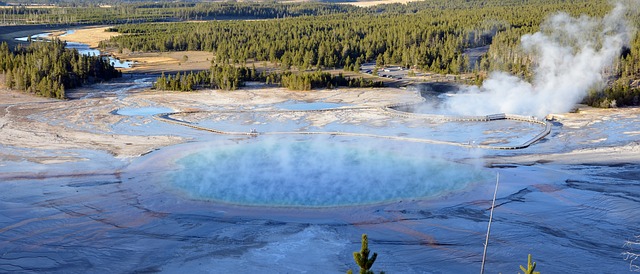
Geothermal energy is a type of green energy that harnesses the power of heat. This heat comes from within the Earth.
To generate electricity the steam produced spins the turbines.
This renewable source of energy relies on the natural heat. Produced via geothermal activity.
Which includes volcanic eruptions, hot springs, and geysers.
With the proper extraction techniques. This energy can be an efficient and friendly alternative to traditional fossil fuels.
One advantage of geothermal energy is that it produces no greenhouse gas emissions.
Additionally, unlike solar or wind power. Which can depend on weather conditions or sunlight availability. Geothermal plants can operate throughout the day and year-round.
Moreover, since 2005. Advancements in technology have made it possible to access sources of geothermal power. Through enhanced geothermal systems (EGS).
This technique involves drilling deep into hot rock formations. Where water is then injected to create steam for electricity generation.
Geothermal heat itself could used to heat buildings, water, or greenhouses.
In conclusion.
Investing in clean and renewable sources. Like geothermal energy will help reduce greenhouse gas emissions and combat climate change.
While also creating new job opportunities in the growing green energy sector.
Biomass energy
Biomass energy is a type of green energy. It involves the conversion of organic material into usable fuel sources.
This can include anything from wood chips, agricultural waste and municipal solid waste.
The process involves burning biomass to produce heat or electricity. This can then power homes and businesses.
One of the major benefits of biomass energy is that it is renewable. Meaning it comes from a resource that over a short time will replenish themselves.
Unlike fossil fuels, which are finite resources. Biomass can be grown and harvested for use as fuel.
Because it often comes from discarded waste products or other materials.
Using biomass for energy can help reduce landfill waste. Plus other environmental problems associated with traditional waste disposal methods.
Yet, there are also potential drawbacks to using biomass energy.
For example, some critics argue. The process of harvesting and burning biomass could actually release more carbon emissions. than traditional fossil fuels.
Additionally, there may be concerns about deforestation. Also, other negative impacts on natural habitats. When large-scale production of certain types of biomass becomes common practice.
Is Nuclear Energy Green
Nuclear energy is often seen as a controversial form of green energy.
While it does not produce greenhouse gases. Like other non-renewable sources such as coal, it does produce radioactive waste.
The waste materials need storing for thousands of years.
This storage can pose environmental and health risks if not handled in the correct way.
The process of mining and enriching uranium. The urainium used in nuclear reactors a has negative impacts on the environment.
But, proponents argue that nuclear energy is cleaner than fossil fuels. And offers a reliable source of baseload power which can help to reduce carbon emissions.
Especially while developing renewable sources further in the short term.
Some countries have even managed to achieve low-carbon electricity grids. By their demand on nuclear power.
Consider individual perspectives and priorities on whether nuclear energy is green. We all have our own opinions.
While some may view it as a viable solution to climate change and reducing reliance on fossil fuels. Others may see its potential safety risks as too great a concern.
Give careful consideration to any form of energy production, it’s advantages and drawbacks. Before determining its sustainability.
Pros and Cons of Green Energy
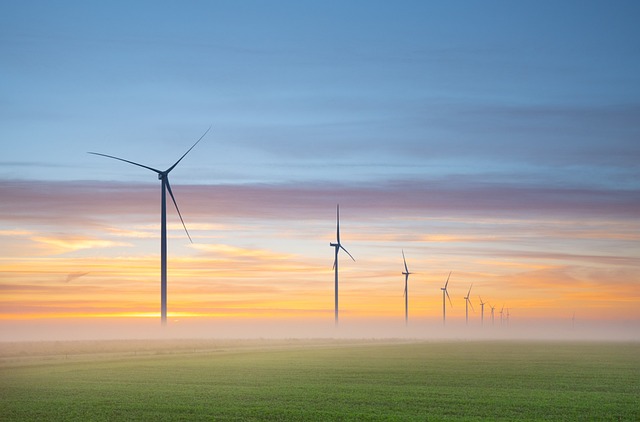
Green energy refers to renewable energy sources that are friendly and sustainable. This form of energy includes solar, wind, hydroelectric, geothermal, and biomass technologies.
Unlike traditional fossil fuels such as coal and oil. That release harmful greenhouse gases into the atmosphere when burned.
Green energy sources generate electricity without producing pollution or contributing to climate change.
Pros of Green Energy
One of the main advantages of green energy is its sustainability. Unlike fossil fuels which are finite resources that will run out.
Over time renewable energy resources can replenish themselves.
Besides being environmental friendly, green energy also has economic benefits. Job creation in the clean tech industry reduced dependence on foreign oil imports.
Cons of Green Energy
Despite its many benefits. There are also some downsides to using green energy sources.
For example, the upfront costs associated. To instal solar panels or wind turbines can be expensive. Not only for individuals but businesses too.
Not all locations have suitable conditions for certain types of renewable energy production.
For example, areas with low wind speeds may not be ideal for wind turbines.
Some critics argue that green technologies. Such as biofuels can still have negative environmental impacts.
If they need large amounts of land or water resources for production.
Transitioning to Green Energy
Green energy is a term used to describe sources of power that are sustainable and renewable. Have a lower impact on the environment than traditional fossil fuels.
These energy sources include solar, wind, geothermal, hydropower, and biomass.
They generate electricity with little to no greenhouse gas emissions. Plus, a minimal waste production.
Transitioning to green energy has become important in recent years. As the negative impacts of climate change have become more clear.
Driven by both environmental concerns and economic benefits. The shift towards greener energy has gained pace recently.
Renewable sources of energy have become cheaper over time. Due to technological advancements and economies of scale.
Governments around the world are also incentivizing companies. Impart, by adopt green practices through legislation. Such as carbon pricing schemes or renewable portfolio standards.
As a result, many businesses are taking steps towards transitioning their operations. Towards cleaner energy sources as part of their corporate social responsibility initiatives.
Or also to get cost savings purposes in the long run.
Ways to Use Green Energy
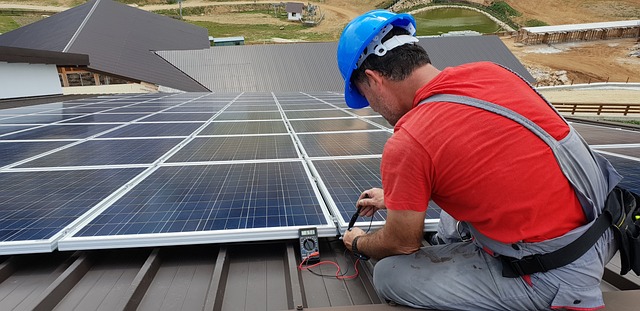
Green energy refers to the use of renewable sources of energy. Those that are friendly and sustainable.
This includes wind, solar, hydro, geothermal, and biomass energy.
Green energy is an important part of our efforts to reduce our carbon footprint. Not to mention the need to mitigate climate change.
One way to use green energy is through the installation of solar panels on rooftops or in open spaces.
Solar power systems convert sunlight into electricity. Useing it for various purposes. Such as powering homes, businesses or even electric cars.
Another alternative is wind turbines. They harness the power of the wind to generate electricity.
Hydropower is another form of green energy. This utilizes moving water to produce electricity.
This can achieved through large-scale dams or small-scale hydroelectric generators. There installed in rivers or streams.
Additionally, geothermal energy utilizes heat from the earth’s core to generate electricity.
While biomass involves using organic materials. Such as wood chips and agricultural waste to produce renewable fuel.
utilizing green energy sources helps reduce greenhouse gas emissions. And promotes a more sustainable future for generations to come.
Is green energy really eco-friendly?
Green energy is often hailed as an eco-friendly solution to the world’s energy needs. But it’s not without its controversies.
While green energy sources like wind and solar power generate electricity. They produce little or no carbon emissions.
Their production and disposal can still have negative environmental impacts.
For example, manufacturing solar panels requires significant amounts of energy and resources. Including rare minerals. That we extract from the earth.
Green energy sources like hydropower can have negative effects on local ecosystems.
Dams built for hydroelectric power can disrupt natural river flows. This could impact fish populations.
It’s also worth noting that the transportation of green energy. Such as equipment to installation sites creates carbon emissions and environmental disturbances.
Despite these concerns. There’s no denying that transitioning to green energy is a critical step. Reducing our carbon footprint is the aim of most Governments.
The key is to ensure that we’re implementing these solutions. In ways that cut their environmental impacts. While maximizing their benefits for both people and the planet.
Does green energy contribute to global warming
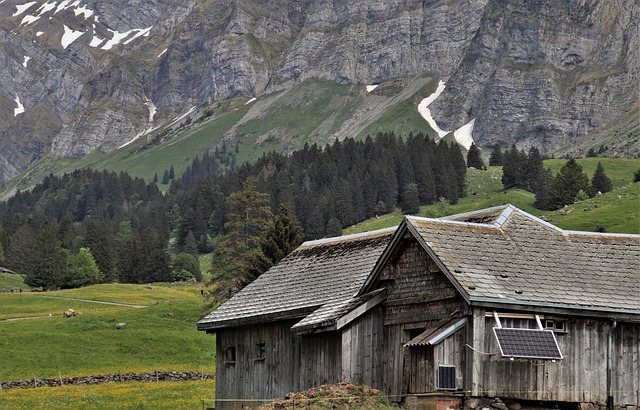
Green energy, defined as power generated from renewable energy resources. Such as wind, solar, hydro, and geothermal.
While green energy is generally considered a sustainable alternative to fossil fuels. Which release carbon dioxide into the atmosphere.
Questions have arisen about whether it contributes to global warming.
The answer lies in the life cycle of green energy production.
Green energy technologies need the manufacturing and transportation of equipment. Which could lead to greenhouse gas emissions.
Yet, these emissions are lower than those associated with traditional power generation methods.
Moreover, the implementation of green energy infrastructure can result in land-use changes.
This could contribute to deforestation and soil erosion.
Take into account these factors. When evaluating the impact of green energy on climate change.
Despite all these challenges. The benefits of transitioning to green energy will far outweigh its negative effects. Especially on the environment.
While there are some concerns that need to addressing on the impact of green energy. On global warming and climate change in general.
We cannot ignore the fact. This source of power is much cleaner than conventional methods. Like coal or oil-based electricity production.
Any step taken towards promoting the usage of Green Energy. Will only make our planet more sustainable for future generations.
Reducing carbon footprints and limiting environmental degradation caused by non-renewable sources. Like coal or oil-based electricity production plants.
Green energy in the united states
Green energy is a sustainable and clean source of energy. It has gained significant attention in the United States.
It encompasses sources such as wind, solar, hydropower, geothermal, and biomass.
The government has been advocating for the adoption of green energy. To reduce greenhouse gas emissions and mitigate climate change effects.
The United States is one of the largest producers of renewable energy globally. With over 11% of its total electricity generation coming from renewable sources.
Various states have set ambitious goals to increase their renewable power capacity.
For instance, California aims to achieve 100% zero-carbon electricity by 2045. Through increased reliance on wind and solar power.
Despite the tremendous strides made toward green energy adoption. There are still challenges that hinder its full use.
One key challenge is high installation costs compared to traditional fossil fuel-based plants.
Yet, advancements in technology coupled with policy incentives. Such as tax credits have made it more affordable.
Helping households and businesses to invest in green energy solutions. Like solar panels and wind turbines.
What are some of the challenges associated with using green energy?
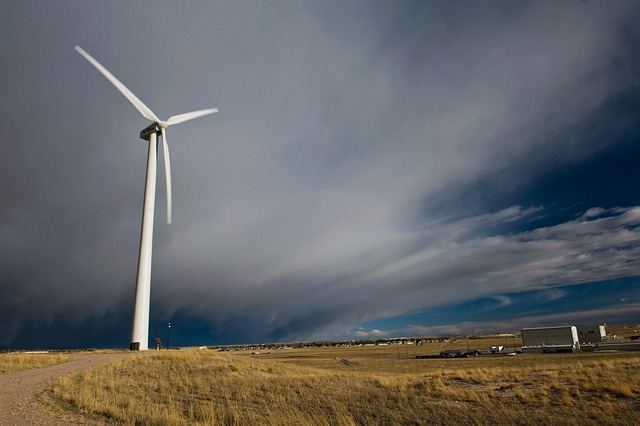
One of the biggest challenges associated with using green energy is its intermittency.
Unlike traditional sources of energy such as coal or natural gas. Green energy sources like wind and solar power are dependent on weather conditions.
If the sun isn’t shining or there’s no wind blowing. Then these sources won’t produce the electricity needed to power homes and businesses.
Another challenge facing green energy is cost. While renewable energy technologies are becoming more affordable. They still need a significant investment upfront.
This can be a deterrent for many individuals and companies. Who may not have the financial resources to make that kind of investment.
There is also the issue of infrastructure. To transition to green energy, we need to have a reliable grid infrastructure in place. One that can handle the increased demand for electricity.
This requires significant upgrades and investments in our existing electrical grids. Which can take years to complete.
Despite these challenges, it’s clear that green energy has immense potential. As a sustainable source of power for our future needs.
What is renewable electricity?
Renewable electricity is a type of green energy. Electricity generated from natural renewable resources. Such as wind, solar, hydro, geothermal, and biomass.
Unlike traditional sources of electricity like coal and oil. Which are finite resources, renewable energy sources are abundant and replenishable.
This makes them sustainable alternatives to fossil fuels. These release harmful greenhouse gases into the atmosphere.
One of the major advantages of renewable electricity. Is its ability to reduce carbon emissions. Which contribute to global warming.
By harnessing clean energy from natural sources. We can decrease our reliance on non-renewable fuels. and create a more sustainable future for generations to come.
Additionally, renewable energy technologies have become affordable. Making it easier for households and businesses alike to adopt greener practices.
Despite these benefits. There are still many challenges associated with transitioning toward renewable electricity.
These include issues relating to storage capacity and intermittency. Plus the need for infrastructure upgrades.
Even so, through continued investment in research and development. This field it is becoming possible to meet our energy needs. While also reducing our impact on the environment.
Renewable energy projects
Renewable energy projects are essential to combat climate change and reduce carbon emissions.
These projects include solar, wind, hydroelectric, and geothermal energy sources. These generate electricity without depleting natural resources or causing pollution.
Such initiatives are playing a significant role. Shaping the future of sustainable energy worldwide.
One of the most promising renewable energy projects is solar power.
Installed on rooftops or large-scale solar farms, solar panels harness the sun’s energy. Converting it into electricity.
This form of renewable energy has experienced rapid growth over the years. Due to its affordability and increasing efficiency levels.
Also, wind power is another notable project. This involves using turbines to capture wind blowing across vast open spaces. Such as oceans or plains to produce electrical power.
Hydroelectric dams also provide an excellent source of sustainable power generation. By utilizing water flow. From rivers, lakes, and other water bodies through turbines to create electricity.
Finally, geothermal plants use heat from Earth’s core. By drilling down into it where steam rises up through pipes. These pipes connect to a turbine generator producing emission-free electricity.
These renewable energy projects have enormous potential for meeting our present-day needs. Reducing our reliance on non-renewable sources. Like oil or coal which harm the environment when burned for fuel purposes.
Recent Posts
Understanding Energy and Electricity: The Power For Progress
Energy and Electricity Energy and electricity are integral components of modern life, powering everything from homes and businesses to transportation and communication. Without them, the...
The Future of Wind Energy The future of wind energy is set to play a critical role in addressing global energy needs while combating climate change. As renewable energy sources like wind and...


